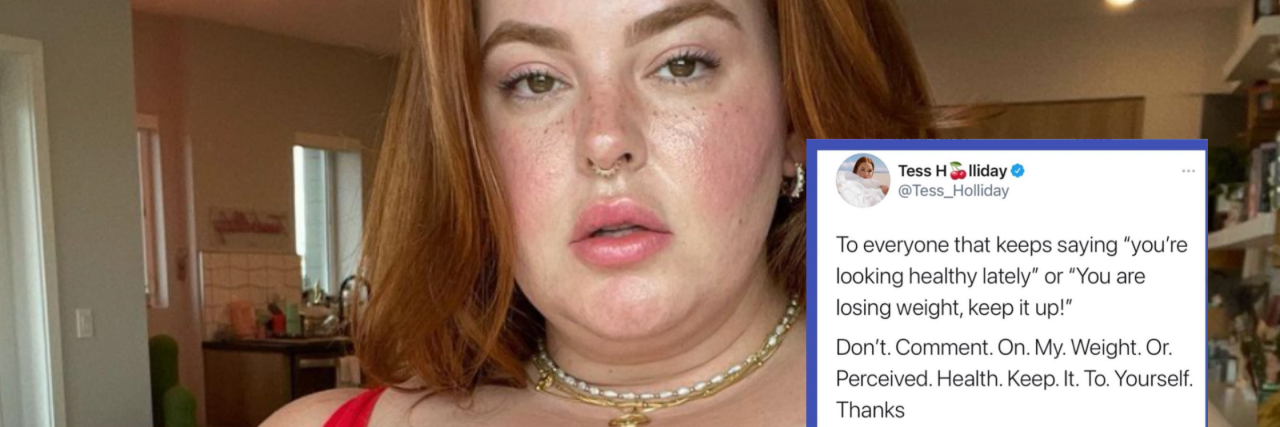Tess Holliday Shows Atypical Anorexia Is Still Anorexia
Editor's Note
If you live with an eating disorder, the following post could be potentially triggering. You can contact the Crisis Text Line by texting “NEDA” to 741741.
Recently, plus-size model and body positivity activist Tess Holliday opened up about her struggle with anorexia nervosa, which subsequently led to hate from those who accused her of lying because she lives in a larger body.
This alone demonstrates why it is so important that body diversity is present in the eating disorder community, and why I find Tess Holliday’s admission so vital in this fight. There is so much stigma around what a person with an eating disorder “should look like” and individuals in larger bodies living with an eating disorder are often overlooked– many falling under the radar and suffering many of the same complications from their eating disorders as those living in smaller bodies. One of the main problems with this is the way that anorexia nervosa has been depicted in the media. While bulimia nervosa is occasionally highlighted in the media as well, binge eating disorder and other specified feeding and eating disorders (OSFED) rarely if ever are highlighted or recognized, and anorexia nervosa has become the “face” of eating disorders.
Subsequently, it is the only eating disorder with a “weight requirement,” which incites weight stigma in the eating disorder community.
While one of the diagnostic criteria for anorexia nervosa is a low body weight when compared to a person’s height and growth trajectory, there is a form of anorexia called atypical anorexia. This eating disorder is categorized under OSFED and requires an individual to have an extreme fear of weight gain and calorie restriction. With that being said, it is not necessary that an individual specify that they have atypical anorexia when they open up about their struggle with anorexia nervosa.
Demanding that there be a distinction only encourages weight stigma and discrimination.
Atypical anorexia is anorexia nervosa and denying an individual the validation of their disorder due to their body size reflects society’s fear of fat individuals– and echoes the idea that individuals in larger bodies don’t have a “successful” eating disorder. A term that I, as someone who struggles with anorexia nervosa and bulimia nervosa, find incredibly insulting.
In my personal experience, when I have been categorized under the anorexia nervosa weight criteria as well as the atypical anorexia criteria, I have found that I received more compassionate care when I was in a smaller body when compared to my seeking treatment in a larger body– not only by other patients, but by staff as well. Weight stigma is such a facet to our society, and it has infiltrated the healthcare system for many, many years. While the eating disorder community has expanded and grown concerning body diversity and providing care for individuals of all sizes, weight stigma is still ever present amongst patients and professionals.
Seeing how other individuals with anorexia nervosa who qualify under the weight requirement attacked Tess Holliday and accused her of lying about her disorder due to her size angers me to no end, but at the same time I am thankful to Tess Holliday for sharing her story and taking these comments in stride because they reflect the weight stigma that is so toxic in the eating disorder community. As a body positivity activist who also struggles with multiple eating disorders, I am passionate about everyone being able to share their story and let their voice be heard without invalidation.
Having an eating disorder should not feel like an accomplishment, and the more we identify diverse stories of survivors– without judgement– the more we can inspire compassion and understanding. Tess Holliday’s omission is a step in the right direction, and I only hope that we can continue to hear more diverse stories of eating disorders in the future. Education is key.
Lead image via Tess Holliday’s Instagram.

